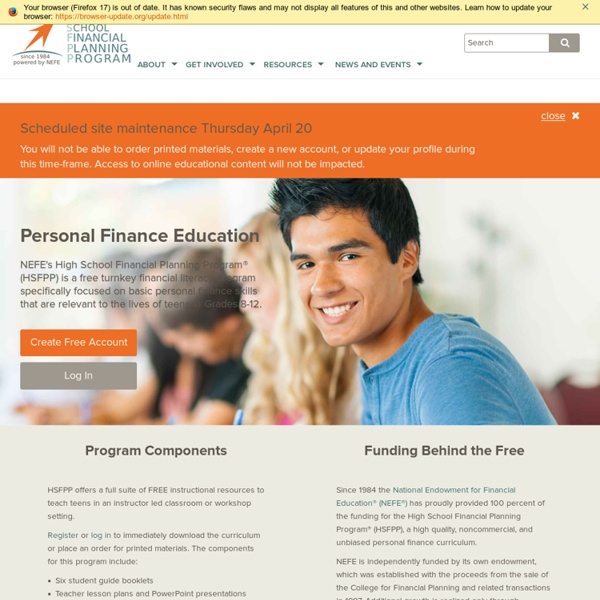High School Financial Planning Program

Financial Planning Module 1
Resources and Downloads for Financial Literacy
Learn About the Benefits of Teaching Financial Literacy What Is Financial Literacy?: Learn what it takes to become financially literate, why this set of knowledge and skills so critical, and what this means for schools. (Edutopia, 2015) The Value of Financial Literacy: Take a look at this infographic for more information about what the research tell us about teaching finance to students. (Edutopia, 2012) Entrepreneurship Education Stresses Learning by Doing: Discover how entrepreneurship education can engage students’ critical thinking skills and deepen their financial literacy. You may also want to check out some of Edutopia’s resources and downloads related to entrepreneurship education. Back to Top Discover Lessons, Simulations, Videos, and Apps 40-Plus Resources for National Financial Capability Month: Find resources for students of all ages in this compilation of games, lessons, hooks, apps, and more. Explore Activities for Grades K-8 Explore Activities for Grades 9-12
Topic 1: Financial Responsibility and Decision Making
Related:
Related:



